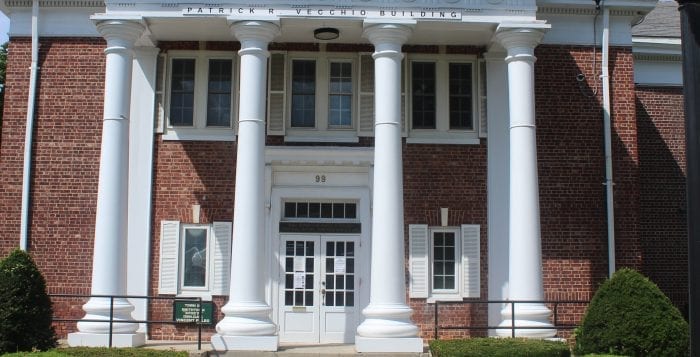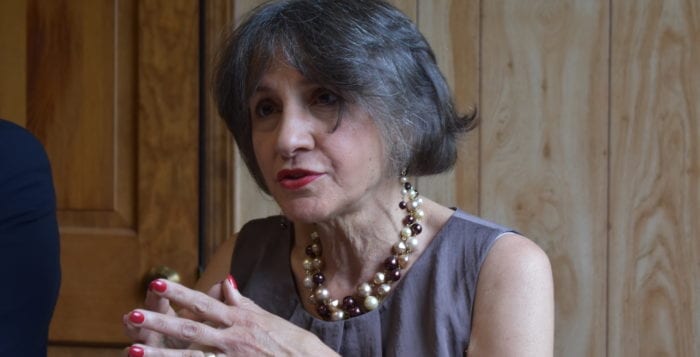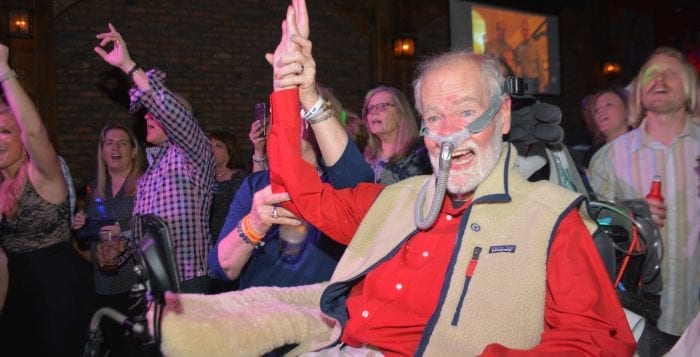The Town of Smithtown is run by a four-member Town Council and a town supervisor. Two seats are open for this year’s election with five people running for office. Smithtown’s council is currently all Republicans. Two incumbents are running for reelection: Thomas Lohmann and Lisa Inzerillo. Their challengers include two Democrats, Richard Guttman and Richard Macellaro, and Libertarian candidate Patricia Shirley.

Patricia Shirley
Kings Park resident Patricia Shirley is running a grassroots campaign to institute change. She said she would like to see the town’s system of government shift to include more transparency and citizen engagement. She’s noticed that at meetings council members tend to talk too technically without engaging residents. She said she has been going door-to-door and business-to-business mainly in Hauppauge, Smithtown and Kings Park to find out what’s on the minds of Smithtown residents. A native Long Islander, she’s noticed a declining state of the Kings Park business district over the last eight years. She wants to see the community thrive, so it offers a promising future for children.
Shirley takes pride in her entrepreneurial background. Her expertise lies in budgeting and grant writing. She expects to be able to help Smithtown improve its planning, auditing and budgeting. She’s been in the health care field for 25 years and has worked at Developmental Disabilities Institute, also known as DDI, in Smithtown over the last 11 years. The group home has grown tremendously during her tenure there, she said. She has also founded the Shirley Academy, a school that trains people on medical billing practices.
If elected, Shirley’s priorities include promoting entrepreneurship. She promises more round table discussions with community members.
New tools are needed, she said, for a new generation. Residents, she said, need to regain control.
“I am a woman and an African American,” she said. “I’m black and I bring diversity to the town.”
She wants to make sure that people get out and vote to bring the count up. This is her first time running for public office.

Richard Guttman
Richard Guttman is another Kings Park resident running for a seat on the Town Council in part because of the decline in the Kings Park business district.
He blames overdevelopment as the underlying cause of many of Smithtown’s issues, whether it’s water quality, traffic jams, cut throughs or the lack of sidewalks and proper street crossings. Overall, he said, it creates safety concerns.
“Trying to go into a store in Kings Park, you put your life on the line,” he said, referring to the parallel parking situation on Main Street.
Guttman wants quality of life to be a main consideration to improve Smithtown communities. Projects, he said, are pushed through.
“When you put up a building, there’s more to consider than tax revenue,” he said.
Guttman is local attorney with 20-years’ experience. He operates his general law practice from his home. He handles immigration, tax and some criminal cases. Lately, many of his cases pertain to foreclosure, he said. He helps people file for bankruptcy to avoid losing their homes.
People, he said, are overtaxed. “Maybe, with a different president, that will change,” he said. As a council member, Guttman promises to advocate to keep costs down.
With regard to economic development, Guttman recognizes the need for better infrastructure, such as sewers. He’d also like to see the Kings Park Psychiatric Center, where he regularly runs, move forward with plans to preserve the grounds as parkland.
“I know it’s in the works, but I’d like to get it moving,” he said.
Guttman is currently taking care of his mother, who suffers from Alzheimer’s disease. If elected, he hopes to help institute programs to help other people in similar situations.
“I am honest, earnest and promise to do a good job for all the hamlets, to listen to constituents and to come up with solutions that benefit the people.”
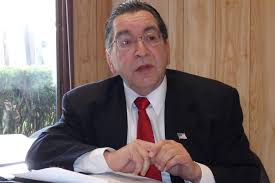
Richard Macellaro
Kings Park resident Richard Macellaro is running for Town Council, but has not been actively campaigning. However, he said in a telephone interview that he wants to win. Macellaro, one of two Democrats in the field for Town Council seats, is also calling for more openness and transparency in Smithtown government. He said that the public needs to more informed about the rights of taxpayers. Agencies and departments need to meet with council members on a more regular basis, he said.
Macellaro is semi-retired and currently works part time for the county’s Traffic and Parking Violations Agency. For 30 years he worked as a director of a home health care business in Williamsburg, Brooklyn.
For nearly 60 years, Macellaro said, the town has lacked a master plan to guide the town’s development. If elected, he will make sure one is implemented and reviewed every five years to make sure the town stays focused. Macellaro has previously run for Suffolk County Legislature and New York State Assembly.

Thomas Lohmann
Tom Lohmann is running for reelection. He was originally voted into office in 2017 and wants to continue what he said he started — reinvigorating the town. His priorities include seeing through the implementation of a master plan for the town’s development.
“The last time we had a master plan was in the ’60s and we’re doing it, it’s underway,” he said.
The job requires full-time service and should not be part time, Lohmann said. The retired New York City police officer will take the $75,000 a year for the Town Council position and, combined with his police pension, he said he’s committed to do the work.
“It’s not about the money,” Lohmann said.
Since he’s been elected to office, Lohmann said he’s spearheaded projects to reinvigorate parkland and beaches, including Gaynor Park and Flynn Memorial Park. The town has three sewer projects underway in Kings Park, Smithtown and St. James. The Kings Park sewers are moving ahead, he said, he’s currently looking for a location for the wastewater treatment plant for Smithtown and expects the St. James sewer to become a combined venture with Gyrodyne, in St. James, in the very near future.
For 62 years, Lohmann has lived in the Town of Smithtown, currently in the hamlet of Smithtown. He said he is a third generation Smithtown resident. As farmland has turned to shopping malls and highways, Lohmann said he’s seen the change.
The key to overdevelopment, Lohmann said, is smart development. A master plan, he said, takes care of that. He notes that the town lacks affordable housing. The younger generation, he said, doesn’t want a house. They want to be near a train line to the city and travel by Uber place to place and walk the town. It’s different, he said, from when he grew up.
The 2 percent tax cap, which state lawmakers have made permanent, Lohmann said, is restrictive. Going forward, he’d like to have more interaction with the school districts. As far as combining services with other branches of government to trim the tax burden on residents, Lohmann said the town is already doing it.
“We’re doing more with less,” he said.
Prior to taking office, Lohmann worked as an investigator with insurance crime bureau of the Suffolk County District Attorney’s Office. He also worked part time as a Head of the Harbor police officer.
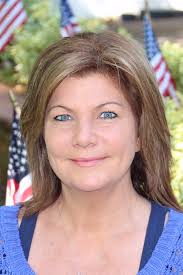
Lisa Inzerillo
Kings Park resident Lisa Inzerilla has been serving as Town Council member since 2015. She said she focuses on common sense initiatives to deliver efficient services, save tax dollars and protect suburban quality of life. She’s committed to making Smithtown user-friendly and has helped the IT department launch a new website this year. Inzerillo initiated the town’s Animal Shelter reform. She serves on the Labor Management and the Risk Management committees. Inzerillo is proudest of amending town code to prohibit hookah lounges and vape stores near schools, playgrounds and day care centers.

